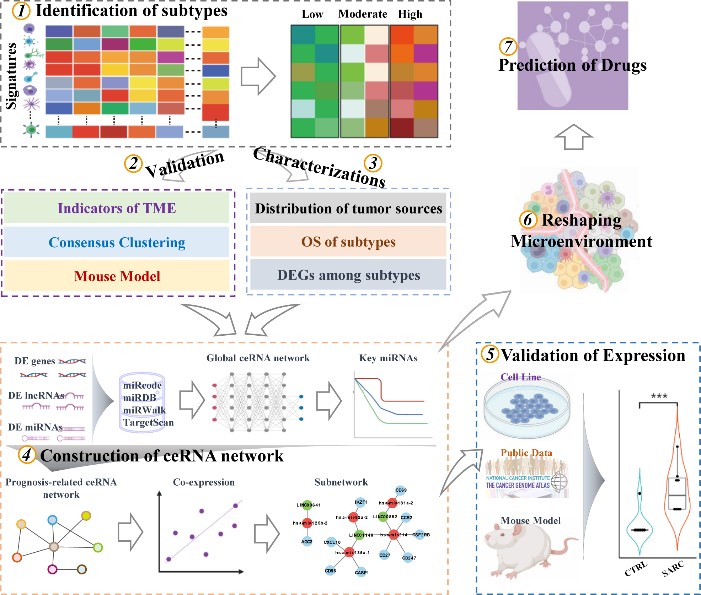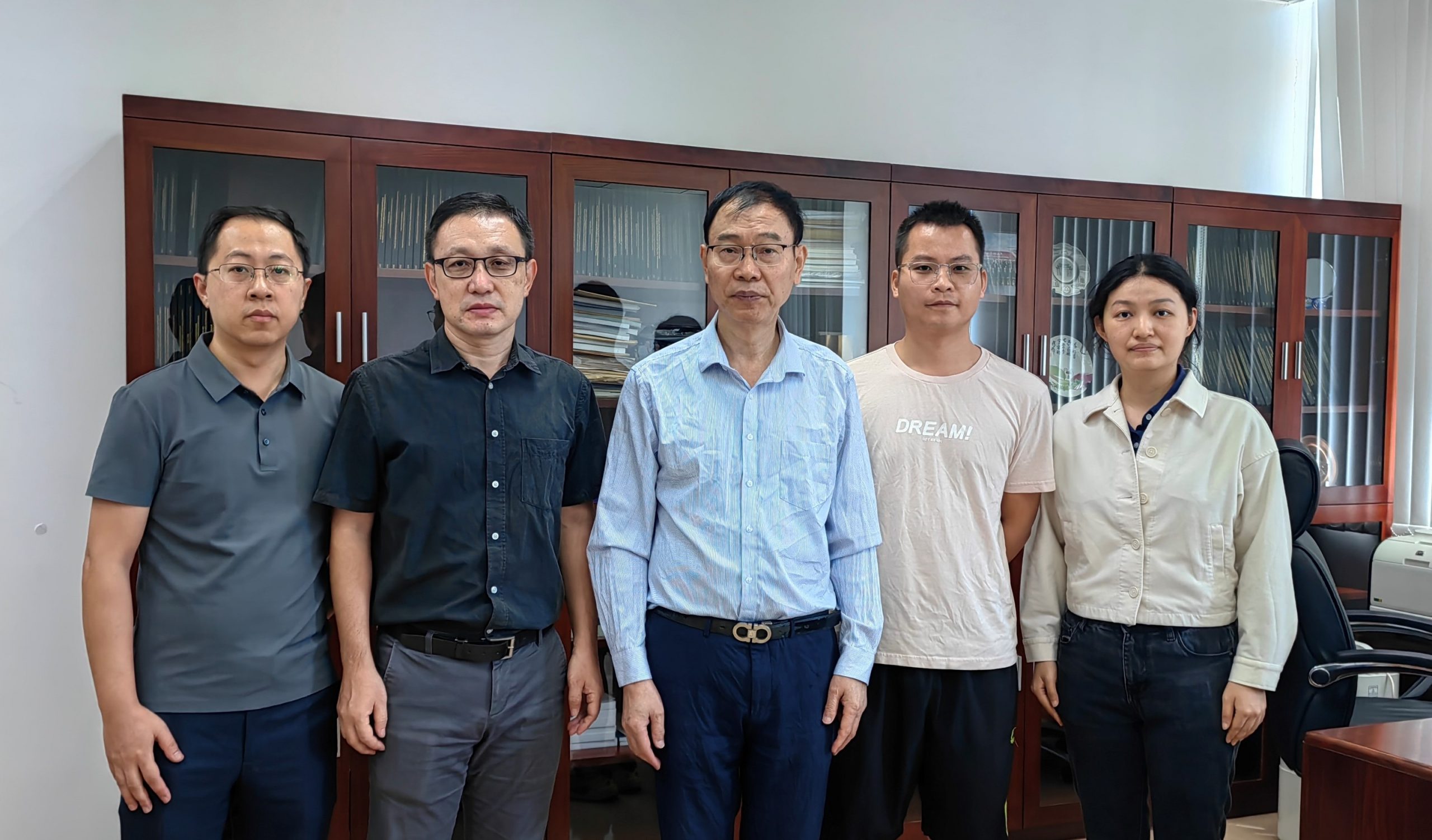A research team led by Zhao Qi, associate professor in the Faculty of Health Sciences (FHS) at the University of Macau (UM), and Chuxia Deng, dean of FHS, together with Zhang Xiaohua, former professor in FHS, have defined sarcoma subtypes from the perspective of the tumour immune microenvironment (TIME) and identified a competing endogenous RNA (ceRNA) network that regulates TIME. By analysing the molecular mechanisms of the disease and data on the key factors, the team proposed a potential therapeutic drug, offering a new approach to the clinical treatment of sarcoma. The research results have been published in the internationally renowned academic journal Clinical Cancer Research.
ceRNA has been the subject of much academic interest in recent years. The hypothesis derived from the resulting ceRNA network provides a more precise and intricate model for interpreting gene expression regulation compared to the miRNA regulatory network. This regulatory model involves a broader range of RNA molecules, including mRNAs, coding pseudogenes, long non-coding RNAs (lncRNAs), and miRNA. The key to the ceRNA regulatory network lies in the competitive binding of miRNAs to regulate the expression of their target genes. Revealing this regulatory model is beneficial to the exploration of gene function and regulatory mechanism at a deeper level, as well as comprehensive analysis of many important biological phenomena, such as cell development and the molecular mechanisms of disease. Moreover, the key factors obtained from the ceRNA network analysis can be considered as potential prognostic markers and therapeutic targets. Currently, the role of the ceRNA regulatory mechanism in tumour genesis, development, and metastasis has been confirmed in various cancers such as liver cancer, breast cancer, and lung cancer.
Additionally, the tumour microenvironment (TME) is a complex system induced by tumour cells, around which a large number of growth factors, chemokines, and matrix-degrading enzymes are produced. This microenvironment is rich in tumour cells, stromal cells, cytokines, and immune cells. These components interact closely with tumour cells and affect tumour growth, progress, and metastasis. In recent years, the ceRNA regulatory network has been found to be closely associated with TME. For example, the ceRNA network can be used to distinguish tumours from normal tissues and mesenchymal stem cells in osteosarcoma, and a prognostic ceRNA network associated with immune infiltration has been found in colorectal cancer. However, there are no studies that can clarify the relation between the regulation and remodelling of the ceRNA network in the TME of soft tissue sarcomas, and there is a lack of research on the implications of the ceRNA network on sarcoma development as well as the prognostic value of the ceRNA network in sarcoma patients.
Based on the above findings, the research team found that there are three common subtypes of soft tissue sarcoma, namely low, moderate, and high tumour immune infiltration, and the overall survival of patients with different subtypes differ significantly. Combining the survival data of patients, the team identified a critical ceRNA network among the subtypes, which was found to have potential prognostic value. They further discovered that the ceRNA network is closely linked to the formation and remodelling of the TME in sarcoma. In addition, based on the characteristics of the subtypes identified, the team identified a potential therapeutic drug, Trichostatin A, which is a histone deacetylases inhibitor, from a database collecting drug/small molecule functional annotation and its interaction with genes. In animal experiments and in vitro experiments, the drug proved effective in reducing histone deacetylase activity and inhibiting the growth of tumours, and the critical ceRNA network identified in the study is likely to be the therapeutic target of Trichostatin A in the treatment of sarcoma. This study provides new theoretical bases and new approaches for the diagnosis and treatment of sarcoma patients.
The corresponding authors of the study are Chuxia Deng, Zhao Qi, and Zhang Xiaohua. FHS PhD graduate Leng Dongliang, PhD student Yang Ziyi, and Research Assistant Professor Sun Heng are the co-first authors. FHS Professor Chen Guokai, postdoctoral fellow Song Chengcheng, and research assistant Ip Ka U also made important contributions to the study. The research project was supported by the National Key R&D Program of China (File no: 2019YFA0904400), the Science and Technology Development Fund of the Macao SAR (File no: 0043/2021/A1, 0004/2019/AFJ, and 0065/2021/A), the Natural Science Foundation of Guangdong Province (File no: 2023A1515010549), Shenzhen Science and Technology Project (File no: SGDX2020110309280301), UM (File no: MYRG2022-00143-FHS), and Dr. Stanley Ho Medical Development Foundation (File no: SHMDF-VSEP/2022/002), among others. The full version of the research article can be viewed at: https://doi.org/10.1158/1078-0432.CCR-22-3396.
| Source: Faculty of Health Sciences | |
| Media Contact Information: | |
| Communications Office, University of Macau | |
| Albee Lei | Tel: (853) 8822 8004 |
| Jason Leong | Tel: (853) 8822 8322 |
| Email: | prs.media@um.edu.mo |


